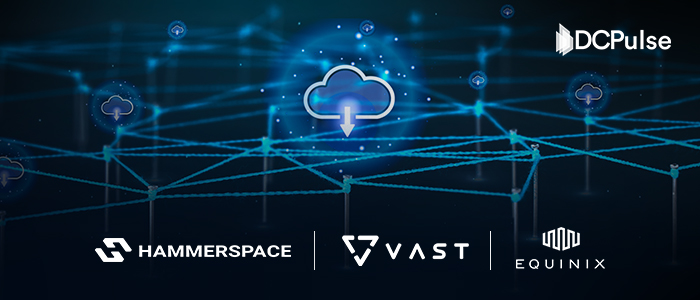Land-based data centers are hitting a wall. AI infrastructure demands are overwhelming the grid, exhausting available land, and forcing delays. Now, a new frontier is surfacing, literally.
In a bold move to reshape how digital infrastructure is delivered and powered, Mitsui O.S.K. Lines (MOL), one of the world’s most diversified shipping groups, has partnered with Kinetics, an infrastructure transition venture backed by Karpowership, to co-develop the first modular, relocatable, and grid-independent floating data center platform. Announced through an official press release on July 7, the agreement outlines a pathway toward commercial launch by 2027, using existing MOL vessels retrofitted with scalable compute, marine-based cooling, and LNG-supplied power.
This platform promises to deliver high-density compute precisely where it’s needed, without waiting for land acquisition, grid approvals, or zoning negotiations.
Market Context and Strategic Rationale
As AI training clusters, edge workloads, and sovereign cloud deployments proliferate, terrestrial data center construction is increasingly constrained. In developed markets such as the U.S., land-based facilities now face median permitting delays of 3 to 5 years, while energy interconnection queues have grown into multi-gigawatt bottlenecks.
In contrast, emerging economies, meanwhile, continue to struggle with legacy grid infrastructure and insufficient capital to support hyperscale development.
To bypass these limitations, MOL and Kinetics have introduced a maritime-first approach: converting decommissioned commercial vessels into floating data centers powered by adjacent powerships.
This model enables deployment in coastal zones with minimal permitting, reduced lead times, and geographic fluidity.
"This project represents a significant step toward our vision at Kinetics: delivering innovative, efficient, and sustainable infrastructure solutions that meet the energy needs of today and tomorrow", said Mehmet Katmer, CEO of Kinetics. "By pairing mobile power generation with floating data infrastructure, we are addressing critical market bottlenecks while enabling faster, cleaner, and more flexible digital capacity expansion".
Platform Architecture and Technical Blueprint
At the core of the project is a 120-meter MOL-owned vessel slated for complete conversion. Its cargo holds will be refitted into modular racks, each supporting 20 MW of IT load, scalable up to 73 MW per vessel.
The use of seawater, or river water, for direct intake cooling eliminates the need for traditional chiller systems, sharply reducing power usage effectiveness (PUE) and lowering both operational cost and environmental impact.
“By using our maritime expertise, we’re not only supporting the future of data but doing it in a way that’s mindful of the environment. We’re committed to expanding our role in essential infrastructure and meeting society’s changing needs,” said Tomoaki Ichida, Managing Executive Officer, MOL
The data center will be powered by an LNG-based powership, operated by Karpowership, which currently deploys over 10,000 MW of mobile generation capacity across 19 countries.
The system architecture allows for integration with onshore grids, offshore wind, floating solar, and battery systems. Terrestrial fiber and subsea cable links will provide high-speed interconnectivity to major Internet Exchanges, IX on land.
Floating Data Center Platform- Technical Specifications:
|
Feature |
Details |
|
Compute Capacity |
20–73 MW (modular 20 MW increments) |
|
Vessel Dimensions |
120 m LOA × 21.2 m beam; 8.98 m draft |
|
Gross Tonnage |
9,731 GT |
|
Cooling System |
Direct seawater/river water intake |
|
Power Supply |
LNG powership; optional grid, wind, solar |
|
Connectivity |
Terrestrial IX + submarine fiber integration |
Roadmap to Deployment
The project is engineered for rapid deployment and large-scale impact, not as a proof of concept, but as a fully commercial solution.
Over the next 24 to 30 months, MOL and Kinetics will move through three key phases:
Project Roadmap (2025–2027):
|
Year |
Milestone |
|
2025 |
Finalize retrofit engineering and structural conversion plans; secure MOUs with port authorities and hyperscale operators; initiate design for connectivity, fiber integration, and site-specific power profiles. |
|
2026 |
Execute vessel retrofit at MOL-certified drydock; complete system installation including racks, seawater cooling loops, and fiber conduits; obtain local maritime and environmental permits, power provisioning clearances, and service-level agreements (SLAs). |
|
2027 |
Commission and launch the first Floating Platform near a designated coastal IX point, initiating full commercial operations and setting a repeatable deployment template for other regions. |
This roadmap reflects not a speculative timeline, but an industrial-grade process MOL has refined across LNG carriers, car carriers, and modular maritime assets. The end goal is: to deployable, scalable infrastructure in half the time of terrestrial builds, without sacrificing operational performance.
Strategic and Environmental Advantages
Whereas traditional builds require major excavation, land reclamation, and concrete-heavy construction, the Floating Platform reuses an entire existing vessel, onboard mechanical systems, and existing power integration points. This circular approach slashes upfront CapEx, shortens build timelines, and aligns with emerging sustainability directives.
Cooling via seawater reduces dependence on energy-intensive chillers, cutting cooling energy use by up to 70% in some marine environments. Integration with floating solar panels or offshore wind further reduces carbon intensity.
As a modular platform, the system can be relocated, expanded, or decommissioned without long-term ecological disruption.
"This MOU represents an important step forward in leveraging the MOL Group's assets and extensive expertise in ship operations to rapidly build digital infrastructure while minimizing environmental impact. Through the advancement of our technologies and services, we are committed to proactively responding to society's evolving needs, including the imperative of environmental conservation,” said Tomoaki Ichida, Managing Executive Officer of MOL.
Competitive Positioning in the Global Landscape
While floating and offshore data centers have been explored before, most initiatives stalled due to limited scale or power dependence. Microsoft’s Project Natick deployed a 12-rack underwater pod off Scotland in 2018, and recorded 8x fewer server failures compared to land, but the project was discontinued in 2024 without commercial follow-up.
Nautilus Data Technologies, known for its river-based barge data centers with shore-side interconnects, has delivered small-scale deployments in the ~1–5 MW range but remains dependent on local infrastructure and lacks scalable modularity.
Floating Infrastructure Comparison:
|
Company |
Platform Type |
Capacity |
Power Source |
Commercial Status |
|
MOL–Kinetics |
Retrofitted marine vessel |
20–73 MW |
LNG + optional renewables |
Launch expected 2027 |
|
Microsoft Natick |
Submerged sealed container |
<1 MW |
Shore-based grid |
Concluded, no commercial path |
|
Nautilus Data Tech |
Barge with river cooling |
~1–5 MW |
Shore grid + river |
Operational, small-scale |
MOL–Kinetics is the first to combine full vessel conversion, powership-scale energy, high-speed network interconnects, and commercial scalability in a single operational model.
Floating Compute as the Next Foundation
The MOL–Kinetics Floating Platform marks a fundamental shift in digital infrastructure deployment, particularly for coastal regions and areas facing grid constraints.
Markets in Southeast Asia, the Gulf, and Sub-Saharan Africa, where high land costs or limited power access remain barriers, could benefit from a solution that is modular, sustainable, and relocatable.
The platform is built to serve a wide range of high-demand scenarios, from sovereign cloud compliance and disaster recovery to offloading edge workloads in dense urban centers.
By fusing maritime logistics with hyperscale agility, MOL and Kinetics are not just presenting an alternative to land-based data centers; they’re establishing a new operational frontier for compute infrastructure, built on water rather than land.





